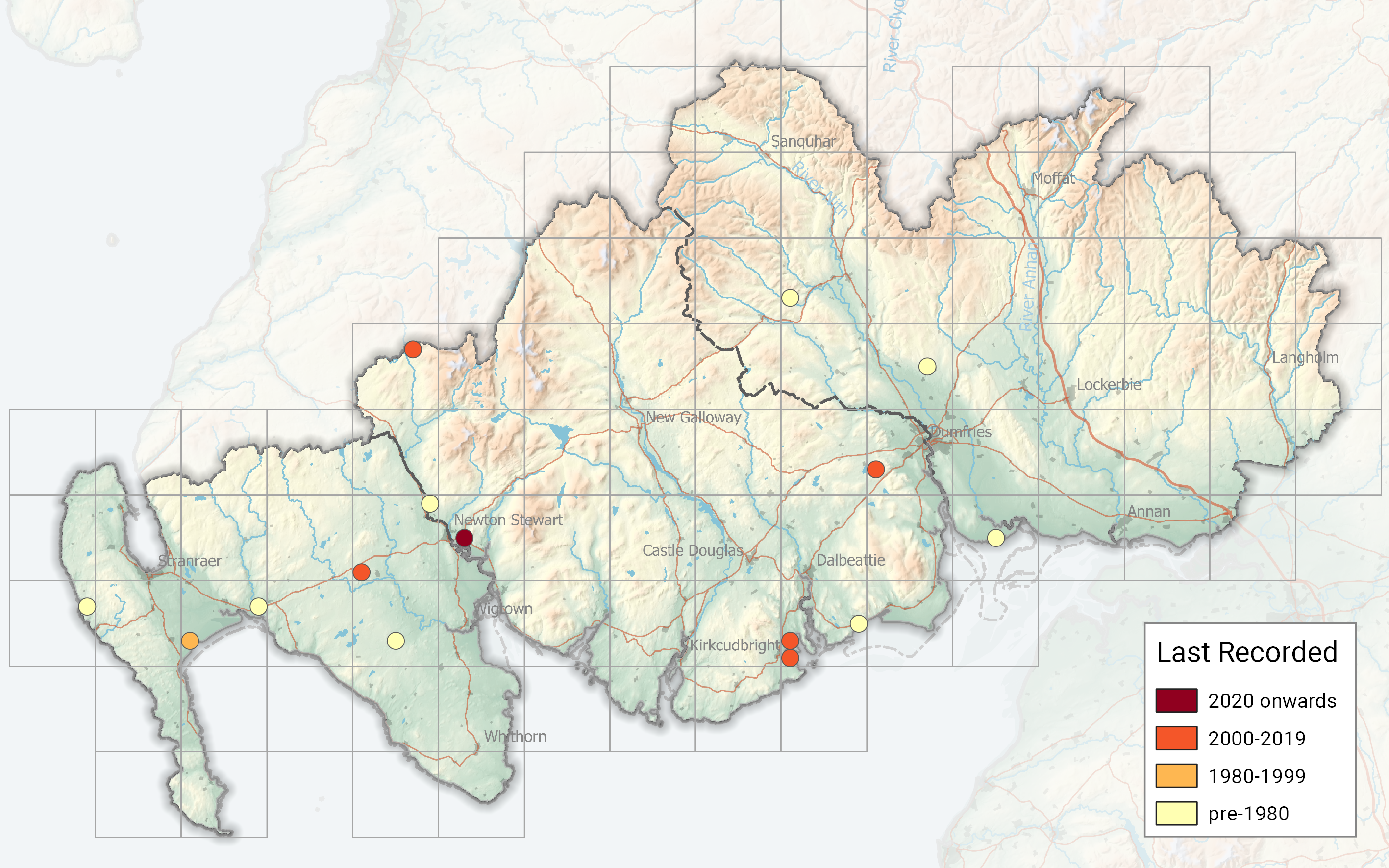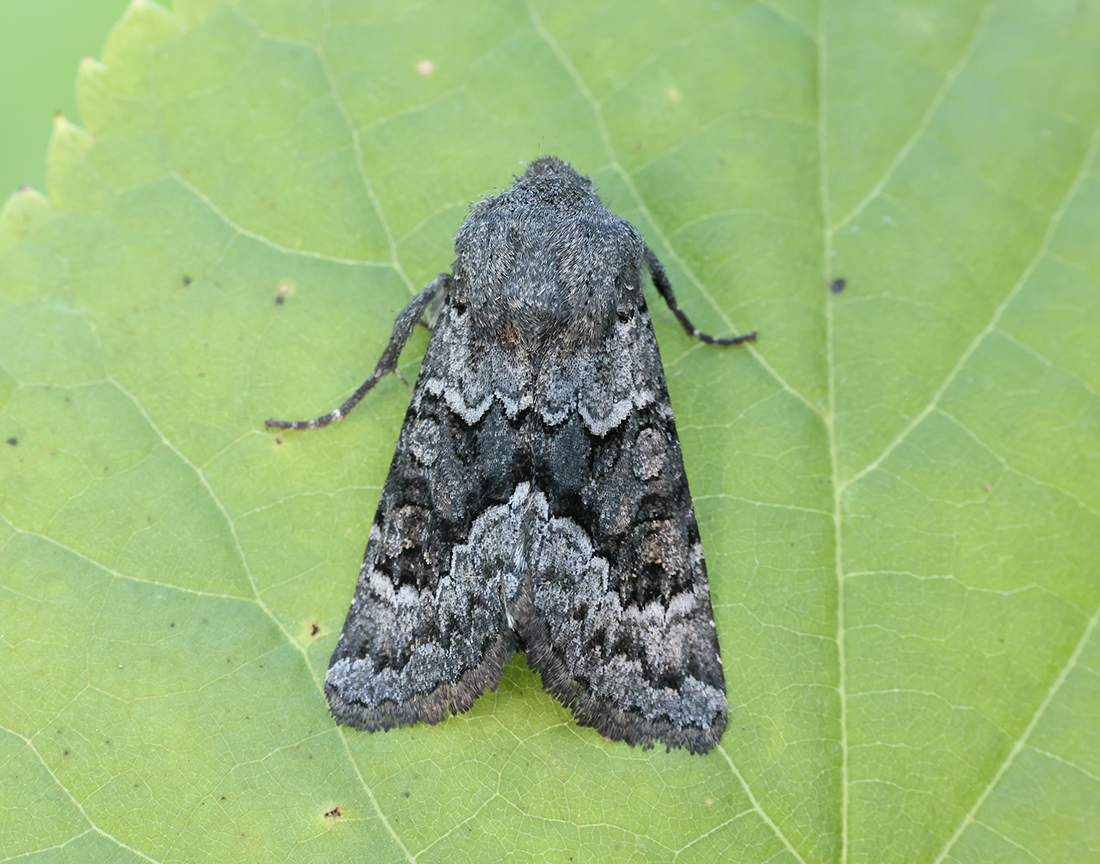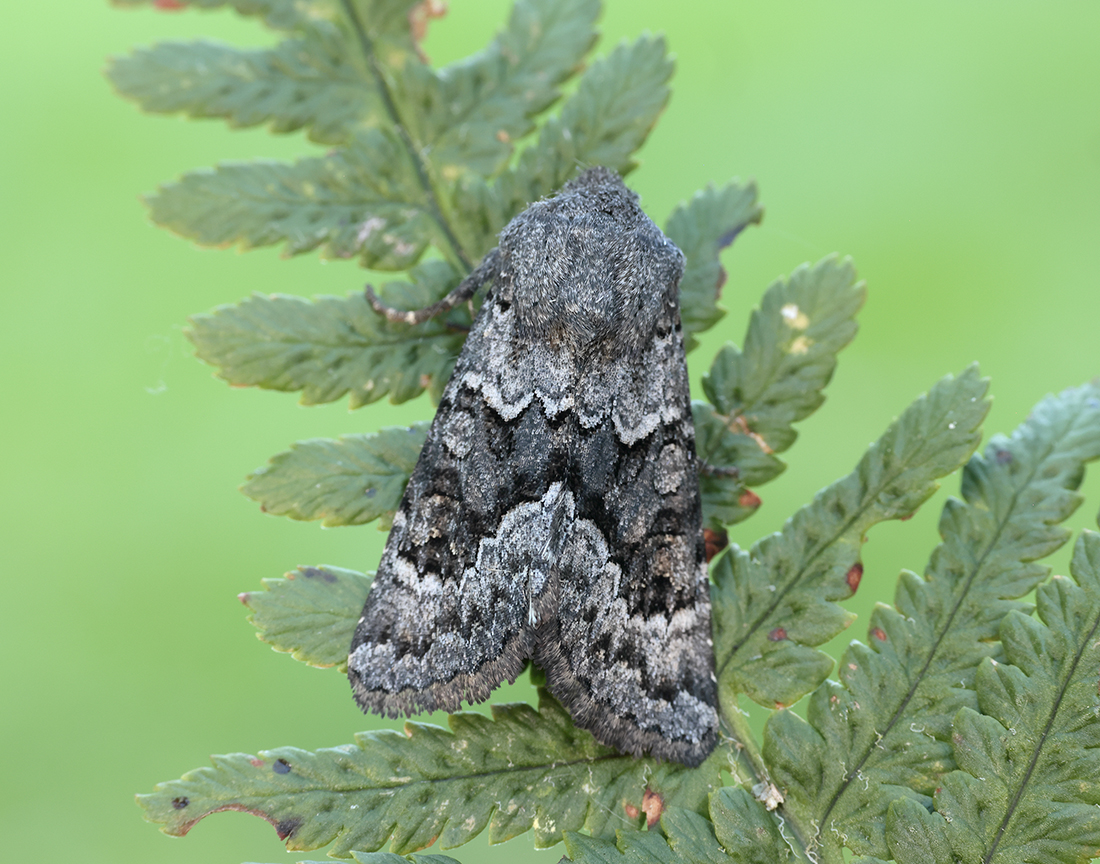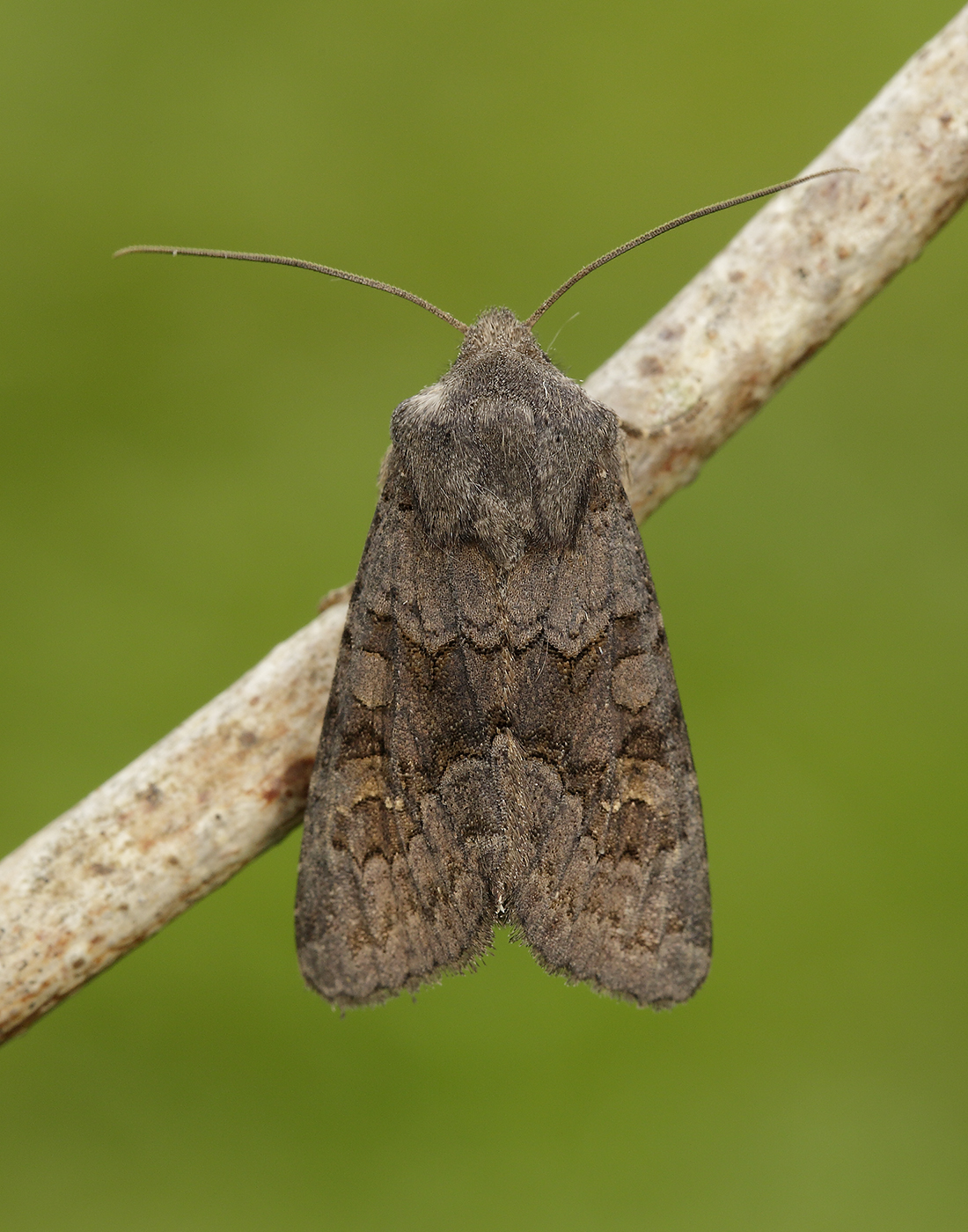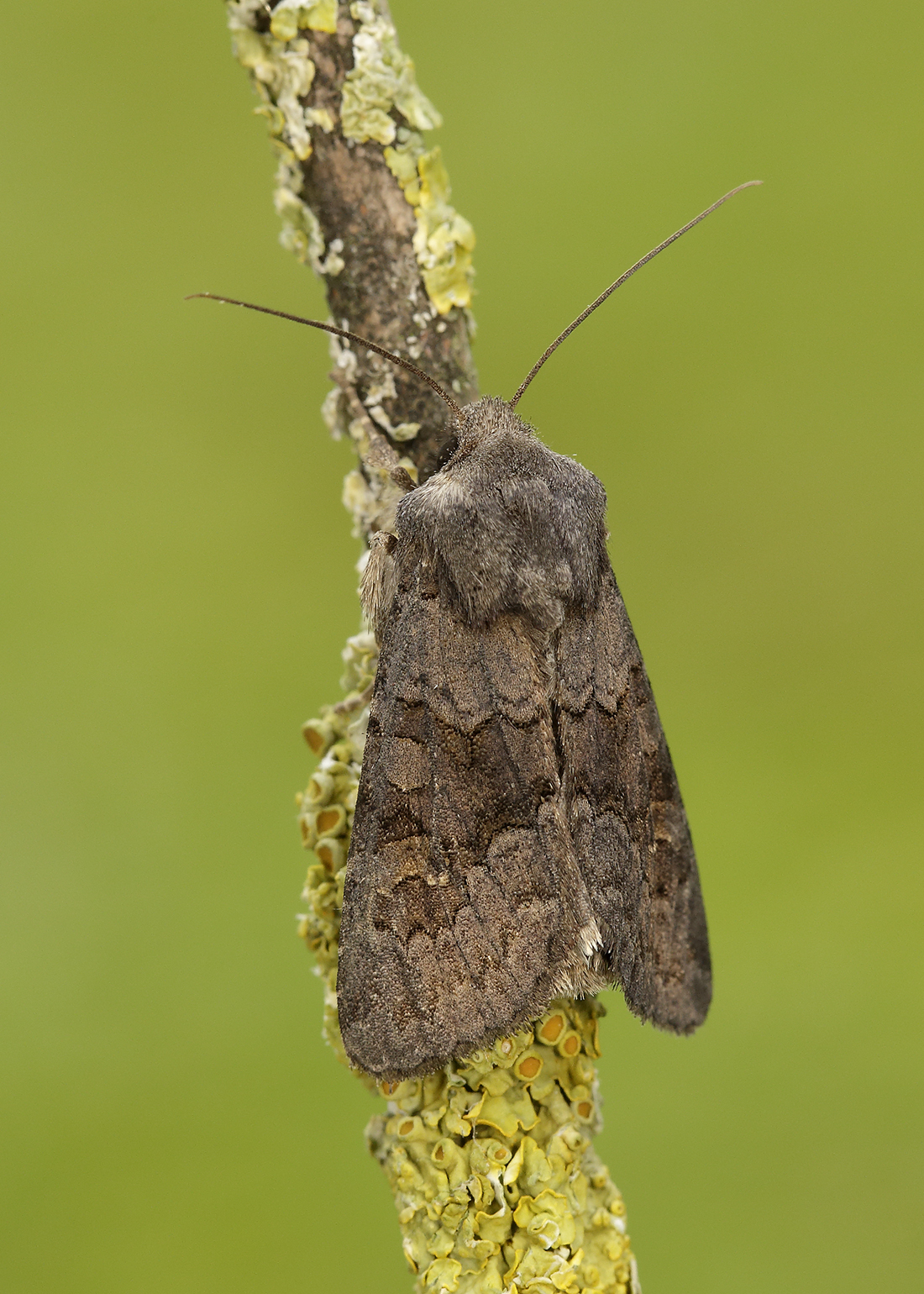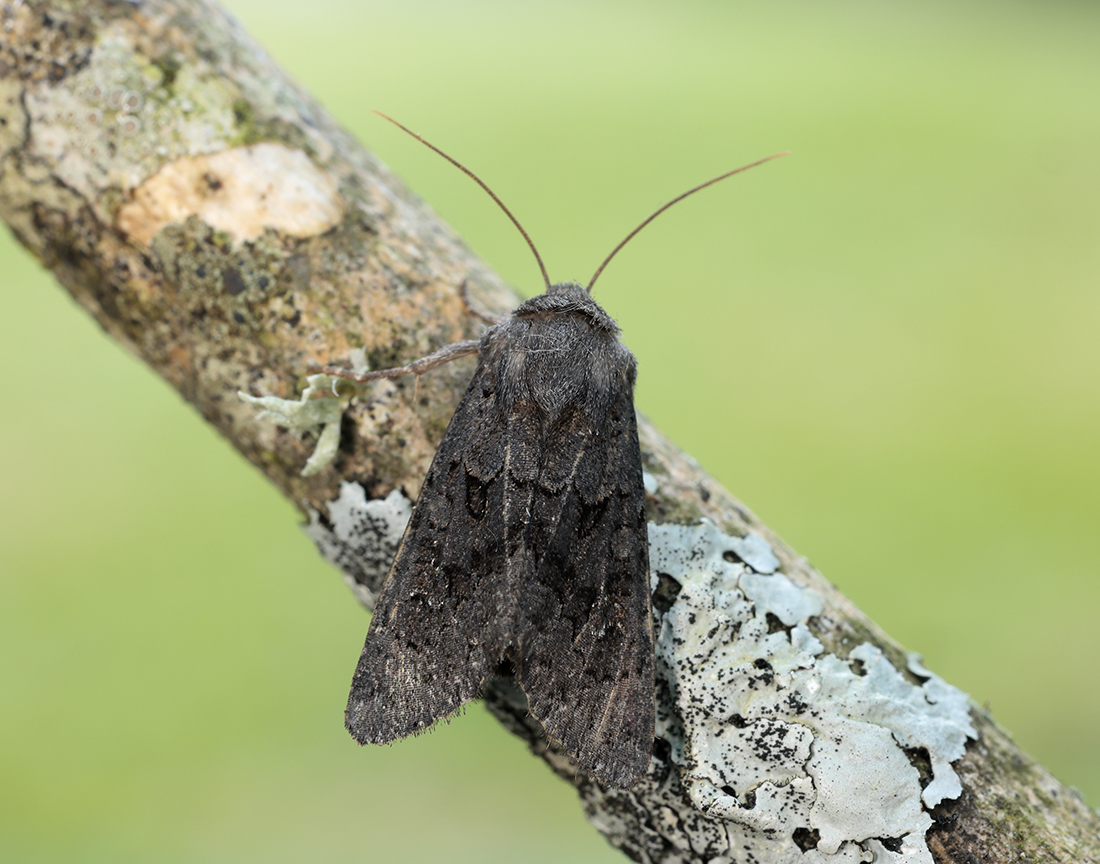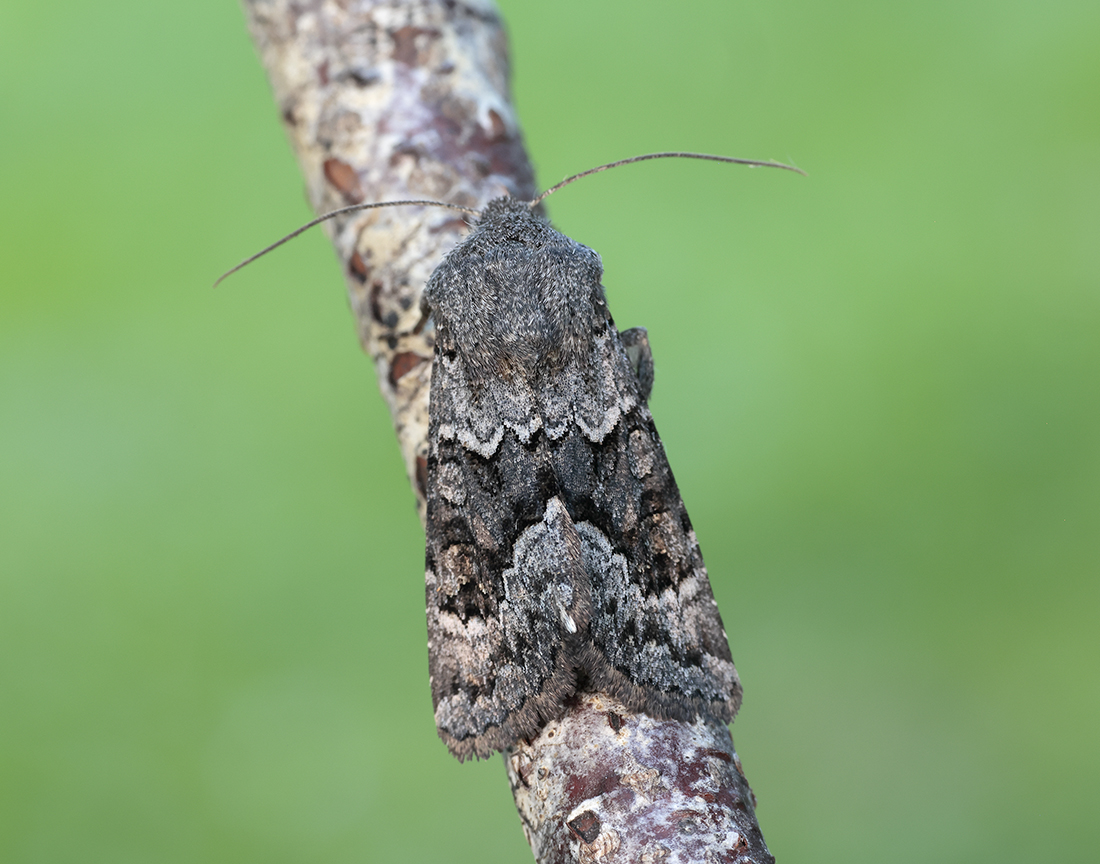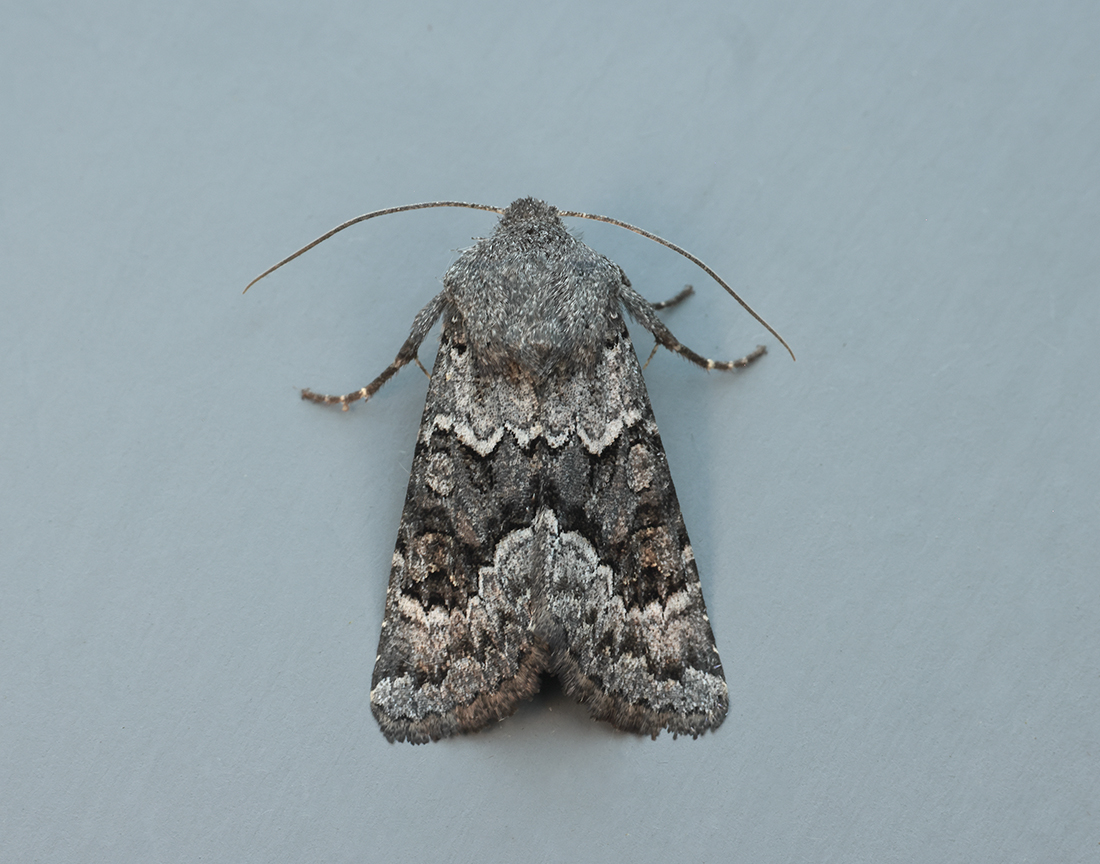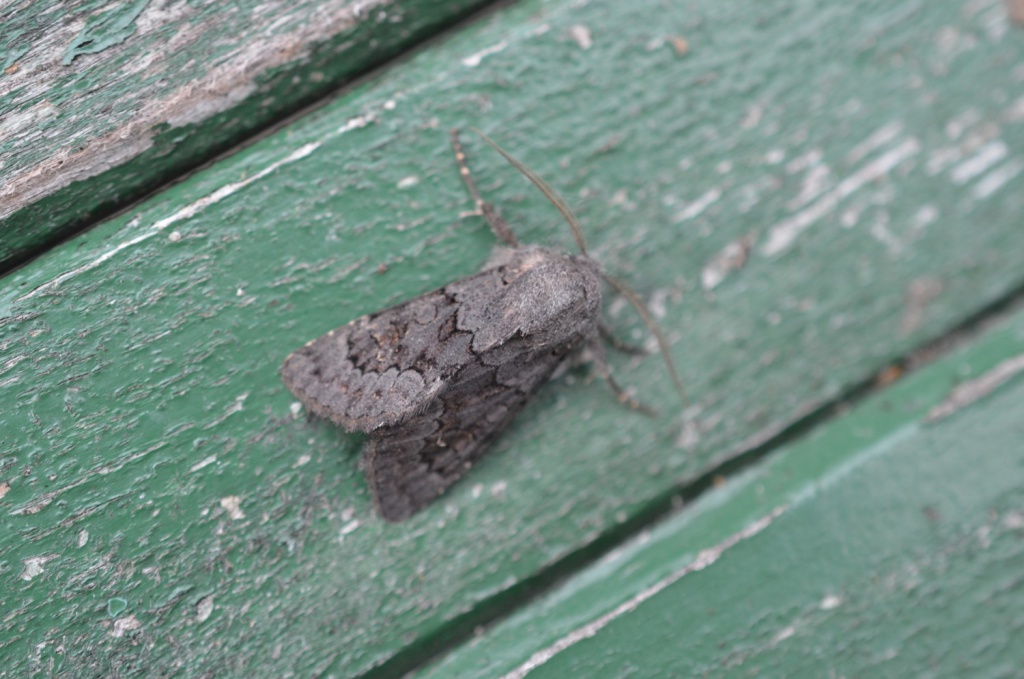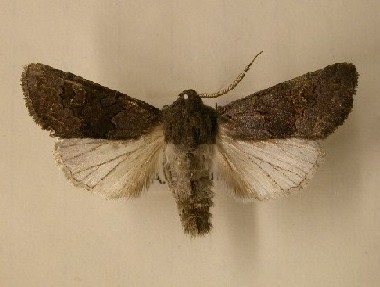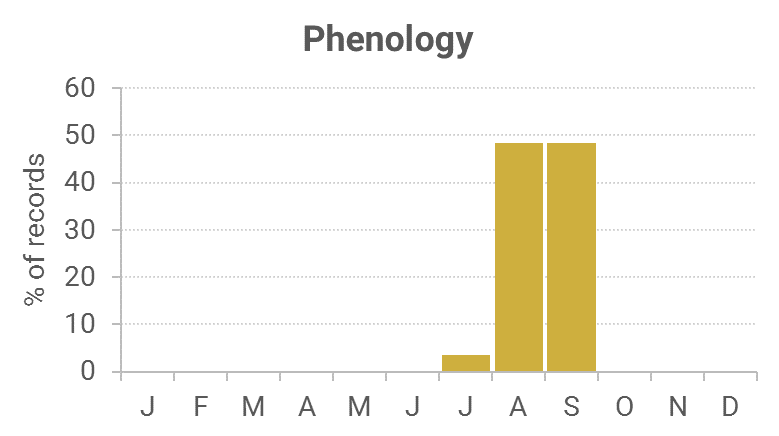Identification
Care required to separate from other noctuids. Forewing either uniformly dull blackish, or heavily dusted with grey and with a blackish central band.
Aporophyla lutulenta, formerly Deep-brown Dart, is no longer considered to occur in the British Isles. The vernacular name Deep-brown Dart should now be applied to Aporophyla lueneburgensis (Ent Rec J. Var 2024: 136(1): 1-6).
Recording Method.
Attracted to light, also comes to sugar and flowers.
Life cycle
One generation. Overwinters as a small larva during autumn to late May, feeding by night and hiding by day low down. Pupation takes place underground.
Larval foodplants
Bilberry, Common Bird’s-foot-trefoil and Heather are among various woody and herbaceous plants and grasses the larvae use.
Habitat
Moorland, rough grassy or rocky areas at the coast or inland at low altitude.
History
Gordon (1913) had caught one on a sugared post on the moor at Corsemalzie on 11th September 1910, with another on heather blossom, same place, on 28th August 1910. W. S. Brocklehurst had also taken some fine varieties at light at Park Place, Glenluce, in August 1910 and 1911. Evans (1915) in his survey of insect migration at Scottish Lighthouses received a male that had been captured by D. A. Mowat, keeper, at Killantringan Lighthouse (VC74), on 19th September 1913.
Sir Arthur Duncan found it on 4th September 1951 at Tynron and again on 25th August 1955. Further records from him singly in 1972 and a series in 1976 all from Kirkmahoe parish (VC72), Portling (VC73) in September 1978 and four specimens from Torrs Warren in September 1983, all specimens now at National Museums Scotland. In the meantime three were trapped in September 1976 at Penninghame (VC74) at the Rothamsted station.
In 2005 it was trapped on Auchencairn Bay, with a further two records in 2007 from Lochfoot and Kirriereoch, and again at the latter site in 2008 and one from Torr Wood (VC73) in the same year. Kirkcowan hosted one in 2009.

